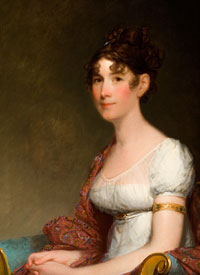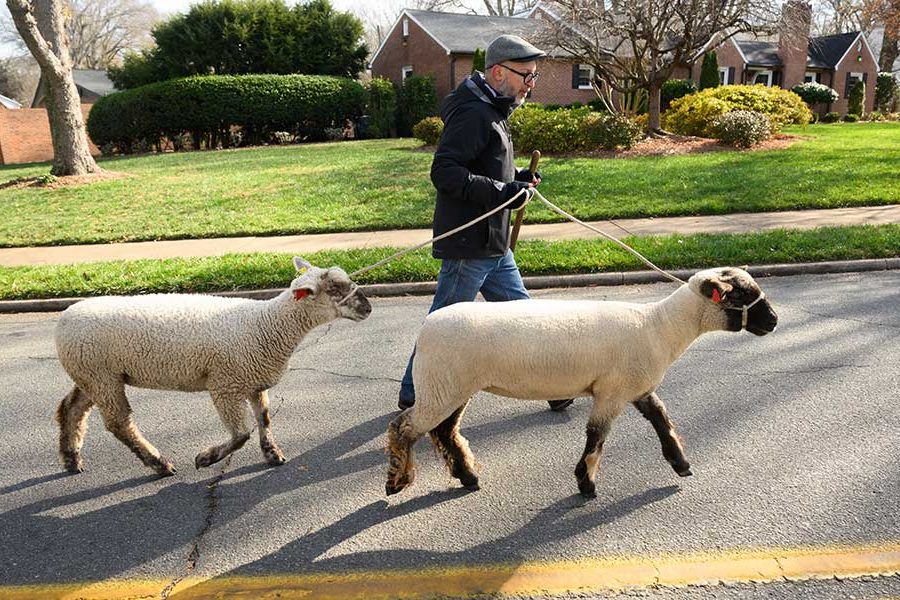Art history detectives
Visual learners rejoice. Sometimes, books are not the only resource needed to write an excellent term paper. This semester, one history class had the opportunity to do the bulk of their research in a way that was not only out-of-the-box, but also out of the classroom.
History professor Michele Gillespie usually includes visits to art museums in Winston-Salem in her classes. This semester, however, she expanded this idea to benefit both the students in her Women and Gender in Early America course and the local museums.
“I always ask students to do research papers,” says Gillespie. “But when students write a paper, the professor is usually the only one who ends up reading it. I wanted to make a way for my students’ writing to have a wider reach.”
Gillespie emailed curators at Reynolda House Museum of Amercian Art and the Museum of Early Southern Decorative Art (MESDA) to find out if any works from between 1600-1865 that focused on American women and gender issues needed additional research using primary sources. As it turns out, there were several.
This became a semester-long project in which students picked a piece of art (ranging from portraits to landscapes to quilts) from one of these museums and researched it in a historical context for both a presentation to the museum curators and a research paper for Gillespie. In this, Gillespie’s students became a resource for the art museums as much as the art museums were a resource for students to discover the roles of American women between the 17th and 19th centuries.
Sophomore Claire Tuffey researched a 19th-century portrait of “Mrs. Harrison Gray Otis” (Sally Foster Otis) by Gilbert Stuart in the collection at Reynolda House. Using microfilm of the Harrison Gray Otis papers from the Massachusetts Historical Society, which included the receipt of purchase, Tuffey connected the woman’s Grecian dress — reminiscent of ancient government and the values of antiquity — to subtle messages designed to support and further her husband’s political aspirations.
“The project challenged us to provide local museums with updated research on some of the items in their collections,” Tuffey says. “Conducting this research has been a unique experience because I know that my work will actually contribute to the knowledge base of the museum and the community as a whole.” Particularly valuable was Tuffey’s discovery of the receipt for the sale of the painting from Stuart to Harrison Gray Otis, which was new to the Reynolda House curators.
Another student, junior Kali Vicars, studied the painting “Witch Duck Creek” by Joshua Shaw, a landscape also on view at Reynolda House that is associated with the witchcraft trials of a woman named Grace Sherwood in the early 18th century. In Vicars’ research, she found transcripts from Sherwood’s trial. This discovery led to another one; Reynolda’s curator Allison Slaby found that the original hand-written trial notes are in the collection of the Virginia Historical Society; scans are available online. The collaboration between the professor, the student and the curator led to important new information.
“In many of our pieces from between 1600 and 1865, we had information from secondary sources, but few links to primary sources,” says Slaby. “The students have discovered details about our works from primary sources that we simply did not have before. I think it’s been really valuable for the museum as a whole, and the presentations were really strong. It’s so important to get these previously unknown primary sources and resources, like the receipt and court notes.”
Tuffey has been surprised by how “all the pieces connected, in some way, to the major themes of our course, and added new understanding and perspective to the study of women’s history.” Because of her course assignments, she gained a deeper appreciation for the significance of art in the study of history.
For Gillespie, who is Presidential Endowed Professor of Southern History at Wake Forest, the class project helped strengthen the importance of visual literacy in the intersection of studying art and history.
“History is something that is always undergoing new interpretations, and art exhibits are often the same way,” Gillespie says. “Nothing is really set in stone, and successive generations of scholars bring important knowledge to our understanding of the past and present.”
Categories: Arts & Culture, Experiential Learning, Mentorship, Research & Discovery
Media Contact
Wake Forest News
media@wfu.edu
336.758.5237




